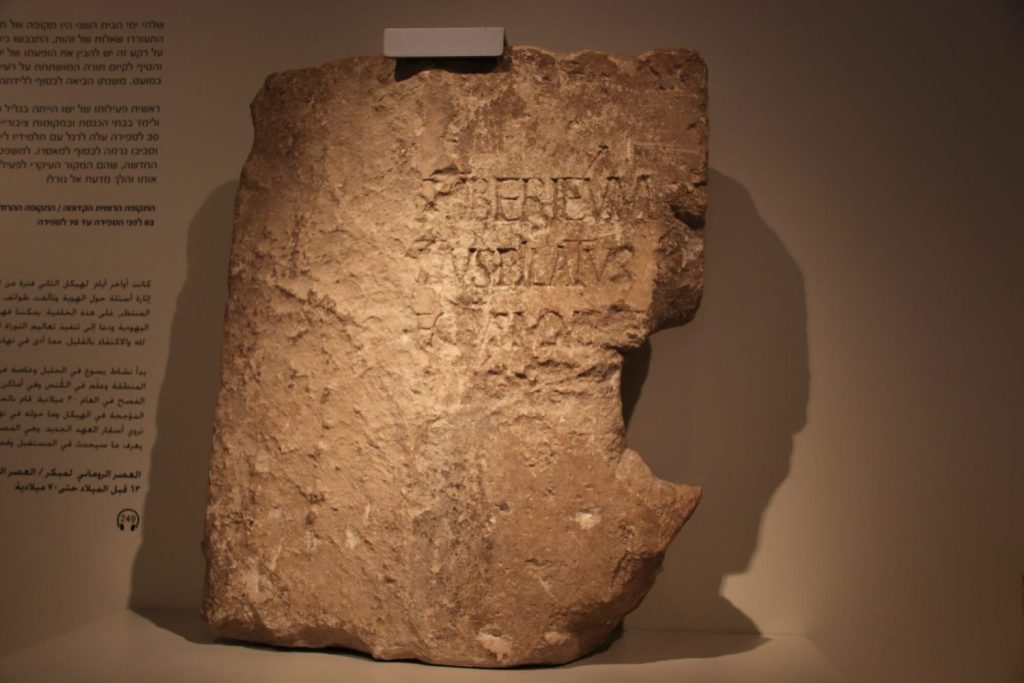So, the Pilate stone is a damaged block of carved limestone with a partially intact inscription attributed to and mentioning Pontius Pilate, a prefect of the Roman province of Judaea from CE 26 to 36. It was discovered at the archaeological site of Caesarea Maritima in 1961. Consequently, the artifact is particularly significant because it is an archaeological find of an authentic 1st-century Roman inscription mentioning “[Pont]ius Pilatus.” It is contemporary to Pilate’s lifetime and accords with what is known of his reported career.
In effect, the inscription constitutes the earliest surviving, and only contemporary, record of Pilate; who is otherwise known from the New Testament, the Jewish historian Josephus and writer Philo, and brief references by Roman historians such as Tacitus. Pontius Pilate likely made his base at Caesarea Maritima. On this site, the stone was discovered since that city had replaced Jerusalem as the province’s administrative capital and military headquarters in CE 6. Therefore, Pilate probably traveled to Jerusalem, the central city of the province’s Jewish population, only when necessary.
Moreover, the Pilate stone is currently located at the Israel Museum in Jerusalem. Plaster-cast replicas can be found at the Archaeological Museum in Milan, Italy, and on display in Caesarea Maritima.

Pilate Stone: The Inscription
On the partially damaged block is a dedication to the deified Augustus and Livia (“the Divine Augusti”); the stepfather and mother of emperor Tiberius, originally placed within a Tiberieum, probably a temple dedicated to Tiberius. It has been deemed authentic because it was discovered in the coastal town of Caesarea, the capital of Iudaea Province, when Pontius Pilate was Roman governor.
Discovery
The limestone block was discovered in June 1961 by Italian archaeologists led by Dr. Antonio Frova while excavating in the area of an ancient theatre built by decree of Herod the Great around 22–10 BCE, along with the entire city of Caesarea.
Furthermore, the artifact is a fragment of the dedicatory inscription of a later building, probably a temple, that was constructed, possibly in honor of the emperor Tiberius, dating to 26–36 CE.
Moreover, the stone was reused in the 4th century as a building block for a set of stairs belonging to a structure erected behind the Herodian theatre stage house. The archaeologists discovered it there, still attached to the ancient staircase.

